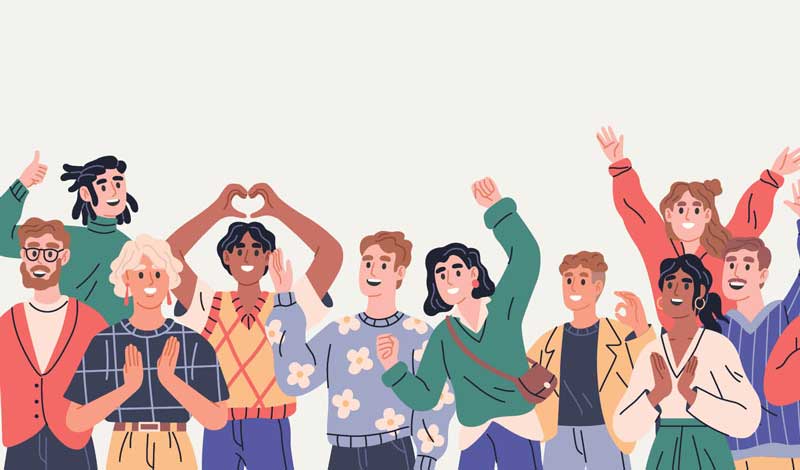At the June Central Executive Committee (CEC) Conference, the SGI-USA presented a bold vision of enabling 10,000 young people to receive the Gohonzon and join our movement for peace by January 2, 2028, Ikeda Sensei’s 100th birthday.
The first milestone: to enable 750 youth to join the SGI-USA by the September 7 Kosen-rufu Gongyo meetings.
Districts across the nation are challenging to make this bold vision a reality by reigniting their vow to share Buddhism with young people in their communities, nurture their growth and empower them to become absolutely happy.
The Living Buddhism interviewed both district leaders and the youth who have joined their districts to learn how friendship is fostered in our communities.
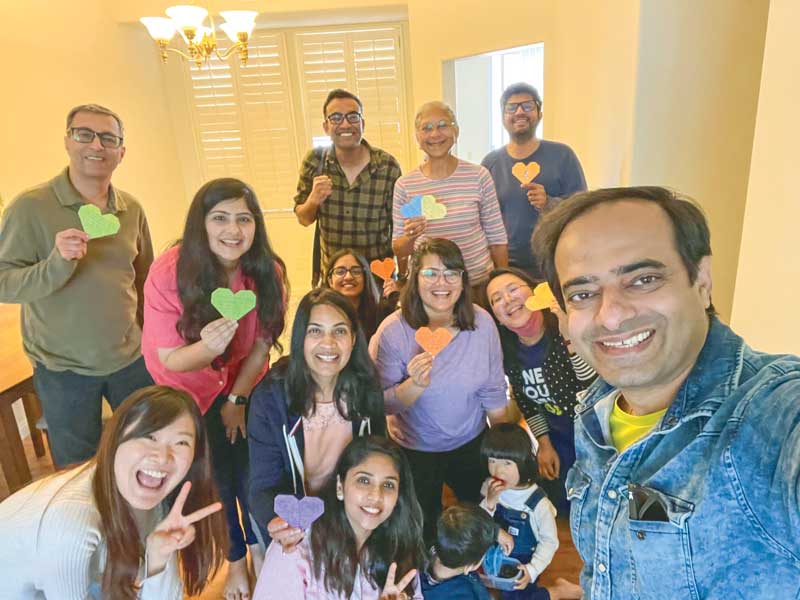
One Step Forward Together
North Park District // San Jose, Calif.
Living Buddhism:Thank you for speaking with us about your district and your efforts to introduce and raise youth. Can you first tell us about your community?
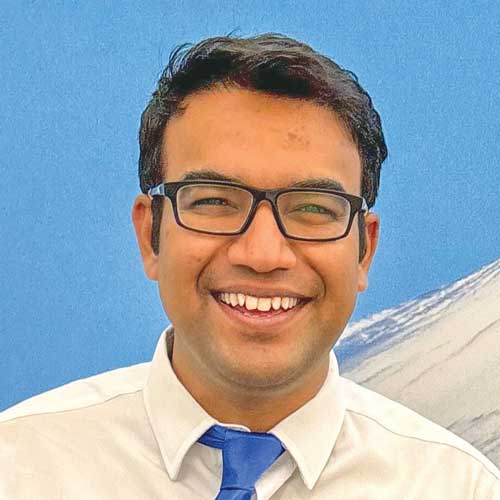
Siddharth Manu (district men’s leader): Yes, situated in the heart of Silicon Valley, our community is made up of mostly apartment complexes. We are close to a few big tech companies, and our district has many tech people but also educators and healthcare professionals. We also have some pioneer members who nurture all of us.
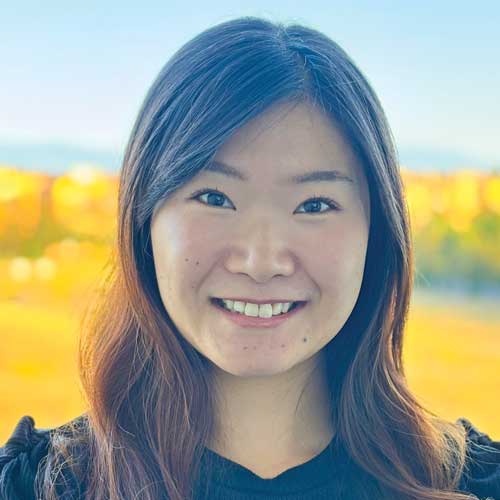
Yurie Ishigaki (district women’s leader): We are fortunate to have many young families and youth in our district.

Navika Babbar (district young women’s leader): We have around seven young women in our district. When I first transferred into this district, I was amazed at how many youth there were! It is a district brimming with youthful energy.
That’s incredible. How do you support these youth and nurture their growth?
Navika: In every discussion or study meeting, we encourage the youth to take the lead. Whether they prepare the study or do something else, most of the youth are happy to engage. We also support them in preparing.
Siddharth: We try to do thought-provoking and creative activities for the youth. During our March discussion meeting, for example, we had an activity where we used yarn to show the connections between members: who introduced whom, who was challenging similar goals, and we saw how deeply interconnected we were. These activities make our meetings engaging and joyful. For the April discussion meeting, we did an Easter egg hunt for the future division members in our district. I really give a lot of credit to the mothers for bringing their little ones to the meetings, to our garden of Soka!
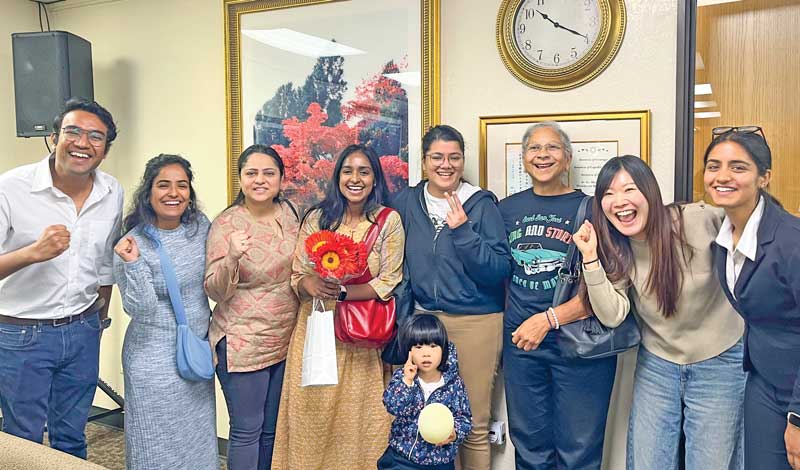
As of June, three youth have received the Gohonzon in your district. Can you tell us how you foster youth and create an environment where they feel comfortable?
Siddharth: We make sure that everyone feels like they are part of the family. We create an atmosphere where people can share what’s in their hearts. We also try not to pack the agenda in our meetings so people have the space to share their thoughts. All of it is a result of our unity.
How is that unity created on your district team?
Navika: We decided at the beginning of the year that we would do 250 visits as a district. We have a monthly meeting where we get together as district and group leaders to see what progress we’ve made on our goals. Our monthly check-in also allows us to talk about things we need to improve upon or any concerns.
Additionally, our leaders are very connected with one another and in constant touch. We have a leaders group chat where we share how much we’ve chanted and whom we visited and if any members need support. The district and the group leaders are all in constant communication with each other.
Siddharth: Every Monday, we also have a district toso, which has become a rallying point for many of the members to chant an hour and share our hearts.
Yurie: We try to chant a lot of daimoku as a district team as well, right after kosen-rufu gongyo! After I was appointed as the district women’s leader, I was so determined based on Ikeda Sensei’s guidance that everyone would take one step forward together rather than one person taking 100 steps. I think everyone in our district takes responsibility for the happiness of our members, and that’s why we are so united. Every person is empowered to fulfill their own unique mission in the district. Together, we embody the unity of “many in body, one in mind.”
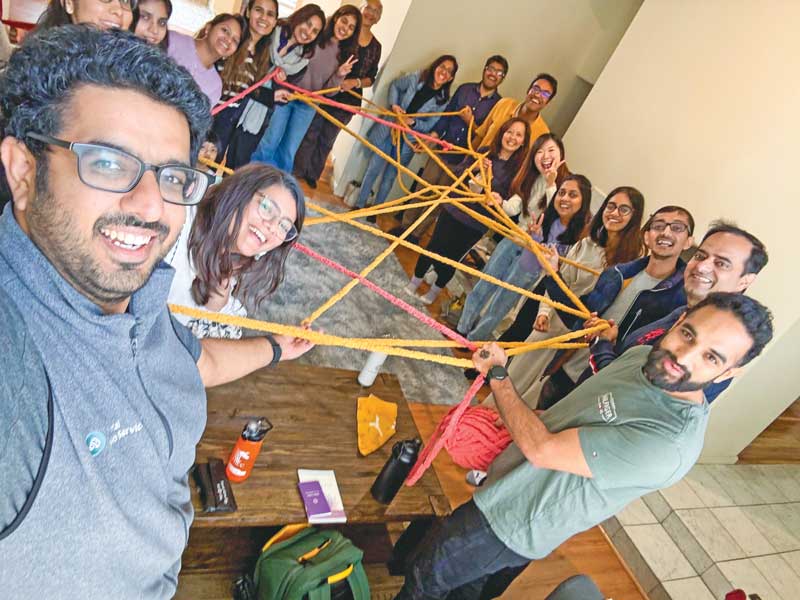
What is your prayer and vision for the district?
Siddharth: When we heard about the Soka Victory District award, we really determined to achieve it by May 3 and report our victory to Sensei in our hearts! It became our expedient means to unite toward kosen-rufu. We achieved all the criteria in May and received the award at the June Kosen-rufu Gongyo Meeting!
Yurie: I’d like to add that when we set the goal to become a Soka Victory District, we asked ourselves what concrete action we needed to take. When we looked at our list of potential Gohonzon conferrals, we saw we had two youth who were eligible. But we didn’t want them to simply just receive the Gohonzon so that we could become a Soka Victory district. We wanted to find out the reason why they had not received the Gohonzon yet. Did they need more conviction, or did they need to attend more meetings? Did they not fully understand the significance of receiving the Gohonzon? As leaders, we had to do our own human revolution first and share our conviction to these youth who were eligible to receive the Gohonzon. We carefully listened to them and provided warm, patient support. That’s when they started to think seriously about joining the SGI.
Siddharth: There was one young man in our district who had been actively participating in the meetings for some time but had not yet received the Gohonzon. Dileep (the group men’s leader) and I deepened our friendship with him and gradually came to understand what was holding him back. He simply wanted to be sure he was practicing correctly. We addressed all his concerns and helped him develop a deeper perspective of faith. Although he was already a part of our family, he officially became a member in April. Our entire district was elated!

That is incredible. Congratulations! Do you have any goals as a district?
Yurie: I hope that one day our district can split into two. And that we foster many capable leaders and youth from our district and send them out into different districts and chapters to support others. I also think our home visits have been key to everything and want to continue supporting our members through home visits.
Siddharth: We warmly connect with each member again and again, because those ongoing visits are the heartbeat of our district. It is why our district is so connected and how we can support each person through their crucial life challenges.
Navika: At the beginning of this year, we set a goal to have five new people join our district, including three youth. With three members having joined so far, we will continue planting seeds and reach our goal.
Yurie: By January 2, 2028, Sensei’s 100th birthday, we are determined to raise strong youth who are striving for kosen-rufu grounded in the mentor-disciple relationship with Sensei!
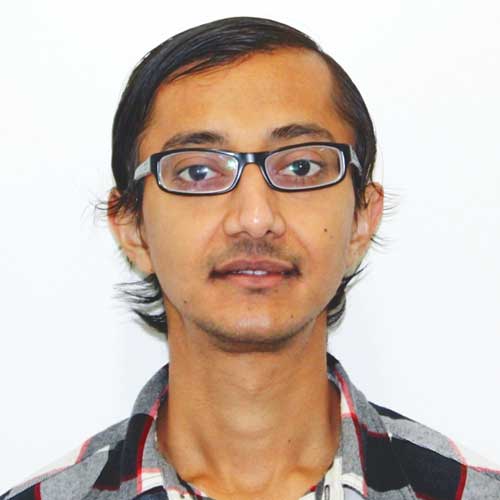
Shubham Nema // City: San Jose, Calif. // Joined: April 2025
How were you first introduced to Buddhism?
Shubham: Around 2023, in my last few months in Raleigh, North Carolina, I was staying at an elderly man’s home. Every morning, this gentleman would chant a couple of hours. I got really curious about what he was doing. It sounded a bit strange—almost otherworldly. One day I asked him, and he explained that he was chanting Nam-myoho-renge-kyo. I found his explanation of Buddhism interesting. He took me to an intro meeting where I learned about the practice. The people I met were very welcoming. That month, several SGI members came to visit me at the home I was staying in. When I was leaving for a new job in San Jose, they got me connected to North Park District.
What has your experience been like with the district?
Shubham: The members are genuinely kind and supportive. They’ve listened patiently to my problems and have always encouraged me to chant with determination for the challenges and goals I have. They often check on me, asking me about my health and the things I’m striving for. Folks from the men’s division group visit me at my home.
Being in the U.S. is slightly lonely, so this community helps me stay connected to others. Each person I’ve met so far in the SGI community is humble, compassionate and always ready to help without any judgment or expectations.
I used to wonder why SGI members go out of their way to support me, when I’m not giving them anything. But gradually I realized that that this is their way of creating good causes in the universe, which will eventually return to them as positive effects. That’s why they always encourage us to do the same for others. This fosters empathy to feel others’ pain, support them and cultivate compassion and kindness in our own lives.
By learning from others’ experiences, I gain wisdom, my own problems become smaller and the pain lessens. It gives me courage and insight to face my challenges head on.
But what I appreciate the most about Buddhism is the teaching of equality. There’s no hierarchy, priest or dependence on an external deity. Everything lies within us.
You had been coming to meetings for over a year when you finally decided to receive Gohonzon. What was the main reason for your decision?
Shubham: Initially I was very hesitant and worried about receiving the Gohonzon. But regular conversation with leaders and multiple people in the district and doing district activities helped me understand the principles of Nichiren Buddhism. I was in the midst of making some important life decisions and I realized the need for courage, determination and a sense of ownership in my life. I wanted wisdom to decipher what was right and wrong for me. So, right before May 3, Soka Gakkai Day, I decided it was time for me to join the SGI and receive the Gohonzon.
What are some benefits you’ve seen in your life from chanting?
Shubham: Many. I can separate the benefits I received before and after receiving the Gohonzon.
Before receiving the Gohonzon, I was part of the SGI community, and I built meaningful connections and genuine friendships. I met like-minded people who became good friends who contributed to my personal growth. It’s helped me approach life’s situations and challenges with greater maturity, empathy and resilience.
Once I received the Gohonzon, my prayer changed and I could see tangible things I was chanting for come to fruition. I had been chanting for my brother’s job, and he got an offer shortly after I received the Gohonzon. I could see the transformative power that this practice has.
Do you have any determinations?
Shubham: I’m working to become more courageous, compassionate, wise and disciplined. I chant not just for myself but for the well-being of others as well.
This practice continuously teaches me to distinguish between right and wrong, become more disciplined and take responsibility for every aspect of my life. I want to keep evolving as a person, because that’s for eternity.
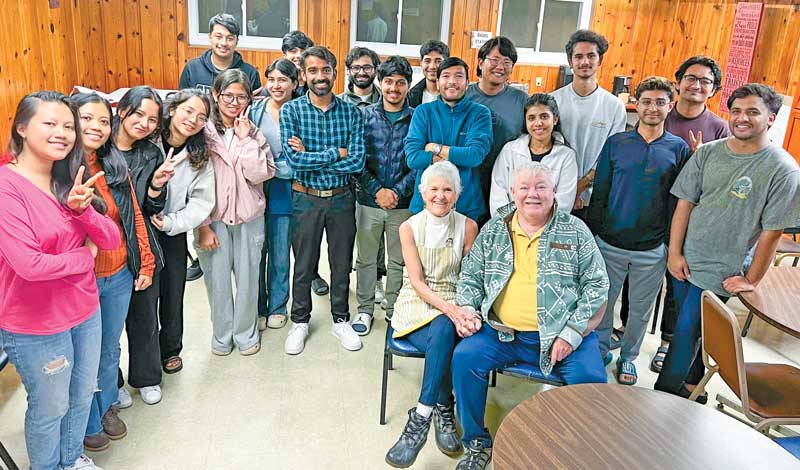
Raising Youth, Not Chickens!
South SEMO District // Cape Girardeau, Mo.
Living Buddhism:Thank you for speaking with us about your efforts to share Buddhism with young people. We understand that you have helped seven youth receive their Gohonzon in the last year.
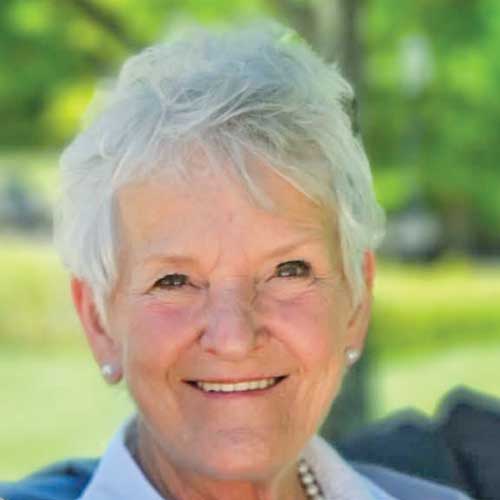
Claire Wroblewski (chapter member care advisor): I’ll have to start with a little background on myself. For 25 years I lived on a farm in Farmington, Missouri. I raised my three children here; they all left home and are doing great. And five years ago, my husband died. Last year, I started thinking, I can’t simply dedicate my life to raising chickens—I want to dedicate my life to raising youth! I decided to move near a college.
Cape Girardeau is a cute little town where Southeast Missouri (SEMO) State University is located. I decided this was the place of my mission, and from there, things moved quickly. I found a duplex and, within two weeks, moved in seven minutes from the school.
I knew I had to get involved in the school, so I volunteered to serve meals at the student center with Dennis, a friend whom I had introduced to chanting years ago. (He has since received the Gohonzon and has been an integral support for the students.) The student center was popular with international students on campus. In exchange for our support, the center director provided me with a large room to conduct monthly, SGI introduction to Buddhism meetings.
Everything starts with daimoku. At our first meeting, we had 35 student guests! I thought that would never happen again, and it didn’t! Because at our next meeting, 70 students came!
Although brilliant, these students had many challenges. Many were far away from home for the first time in a country, culture and language they knew nothing about. Some were financially struggling. They were plagued with loneliness, anxiety and depression. I was happy to introduce them to our powerful life philosophy and Buddhist practice.
What are the intro meetings like?
Claire: We share the basics of practice and the SGI; we might read something from the Living Buddhism or World Tribune or share an experience from them; and then we open it up for Q&A. We also practice saying Nam-myoho-renge-kyo together. If the students are interested, they can sign up to learn more.
Our wonderful region and chapter leaders, who live about two hours away, are supportive of our monthly introduction to Buddhism meeting and come when they can.
For those who are interested, I host a weekly slow gongyo at my house where all the new members and those who are interested can come to learn gongyo.
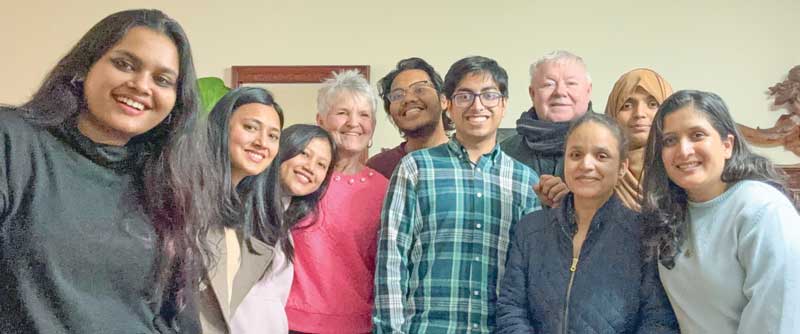
What is your prayer for these young people?
Claire: I pray that they will feel the immense power of daimoku. After we chant together, they are full of energy, and we dance and eat and sing and have so much fun. Every month, we drive these youth to their district discussion meeting, which is about an hour away, and their kosen-rufu gongyo meeting, which is about two hours away. They are all seeing the tremendous power of Buddhism and actual proof in their lives! These youth will become the movers and shakers and leaders on the world stage. They are becoming empowered to get on the stage of their mission and fight for world peace. It’s a very exciting time in Cape Girardeau!
What spurred you to move and focus your time on sharing Buddhism with youth?
Claire: With over 53 years of practice, I have enjoyed a wealth of amazing experiences in my own life and witnessed other people’s victories as well. I have much to share and much to learn. In no way am I done yet when it comes to fighting for kosen-rufu.
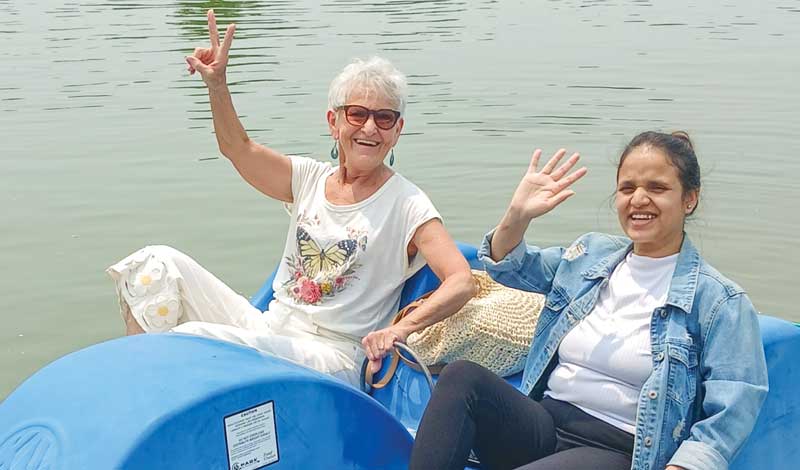
How has your life changed?
Claire: I’m nearly 70, but the youth tell me that I’m like a 30- or 40-year-old in spirit. I’m not feeble. I’m not negative. It’s the joy of shakubuku! The greatest of all joys. I have so much power, confidence and joy!
Second Soka Gakkai President Josei Toda said that the last years of our lives are really crucial. The life condition you possess will take you into your next life. The tricky thing is, we don’t know when the last years of our lives are, so I’m starting now, and I’m happier than I’ve ever been!
Do you have any encouragement for the Many Treasures Group members?
Claire: Caring for the youth is caring for ourselves. It’s the surest way to develop our life condition. My gray hair is my superpower. The students feel comfort in seeing me as a grandmother figure. So don’t think you can’t connect with youth. We all have a mission to encourage and empower others. And always daimoku first.
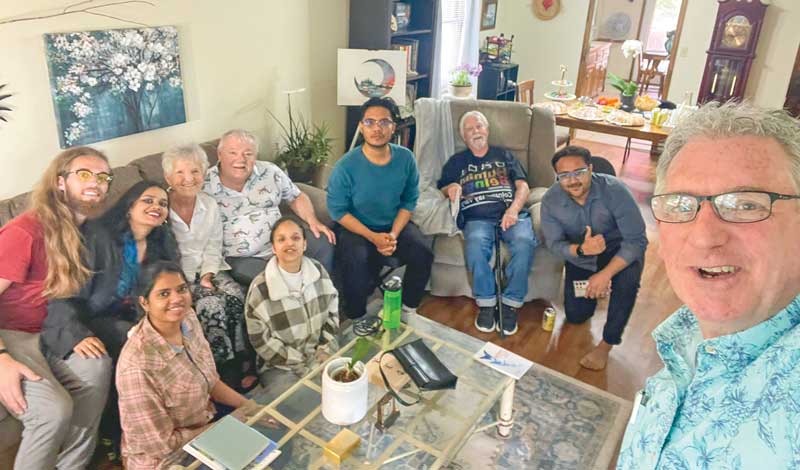
What is your goal for the future?
Claire: For now, I will leave raising chickens to someone else, and I will focus on the youth! I think if every year we can introduce 10 youth to the SGI, it will make a big difference in the world. So that’s what I’m determined to do in South SEMO District, together with the wonderful district leaders, Dennis and our amazing SGI SEMO students!
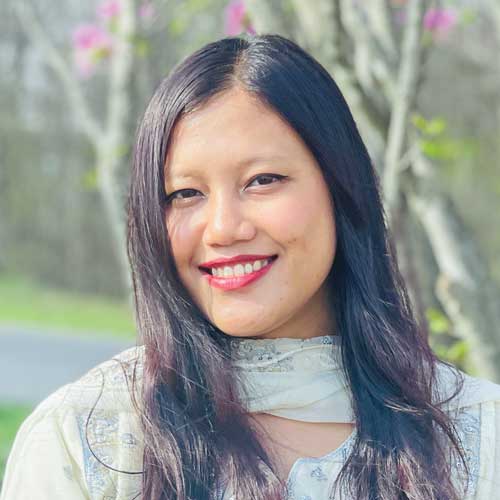
Nweli Sain // City: Cape Girardeau, Mo. // Joined: December 2024
When were you first introduced to Buddhism?
Nweli Sain: I attended my first introduction to Buddhism in October. I grew up in a Buddhist household in Bangladesh, so when I moved to Missouri to go to school, I was looking for Buddhism. I’m 27 and as an international student I was stressed about tuition fees and my financial condition. I was lost and depressed and looking for stability because everything was uncertain. When I met Claire, I was totally new to SGI Buddhism. But when I started chanting Nam-myoho-renge-kyo, I realized that this form of Buddhism was very different from what I had learned as a child. Later, through conversations with many SGI members, I discovered that this is a form of Mahayana Buddhism, something I had never encountered growing up in Bangladesh. My understanding of Buddhism was initially limited to its historical and cultural roots in the Indian subcontinent.
What are some benefits you’ve seen?
Nweli: Being introduced to the SGI is the best thing that’s ever happened. I got my confidence back. I started feeling empowered from within. It’s transformed my relationships with people and has given me a positive mindset about everything that I do. I have also learned how to encourage other people.
Claire has made such a difference in my life and the lives of the students here. She listens deeply and understands the condition of the person she’s talking to. She understands our stress and sorrows even though we are from different generations and cultures. I think having someone listen to us is the best gift because it makes us feel heard.
Also, we just really enjoy our time together. Her home feels like our home, and that’s so important because many of us don’t have family here. She goes out of her way to ensure we don’t feel alone. We’ve also developed such great friendships among each other. There is a great camaraderie. Now Claire is also in touch with my family in Bangladesh, and they are chanting!
I’ve also introduced two of my friends to Buddhism who have now received Gohonzon. They are also seeing so many changes in their lives, and I’m so happy for them.
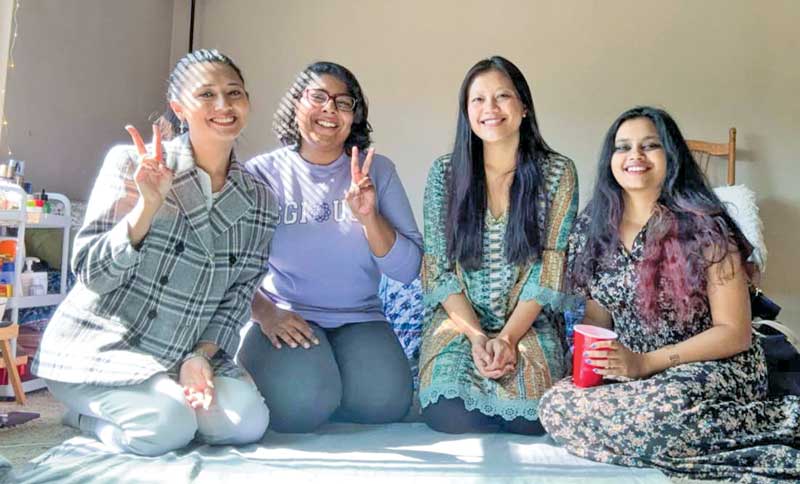
What’s your determination for your future?
Nweli: I just graduated with my second master’s in Teaching English to Speakers of Other Languages (TESOL). I received admission into a university for my Ph.D. program in 2026. I also want to have a family and teach them how to live a peaceful and balanced life, I believe Buddhism teaches us exactly that. It shows us how to live in rhythm with ourselves and the world, grounded in positivity and inner strength.
You are reading {{ meterCount }} of {{ meterMax }} free premium articles

